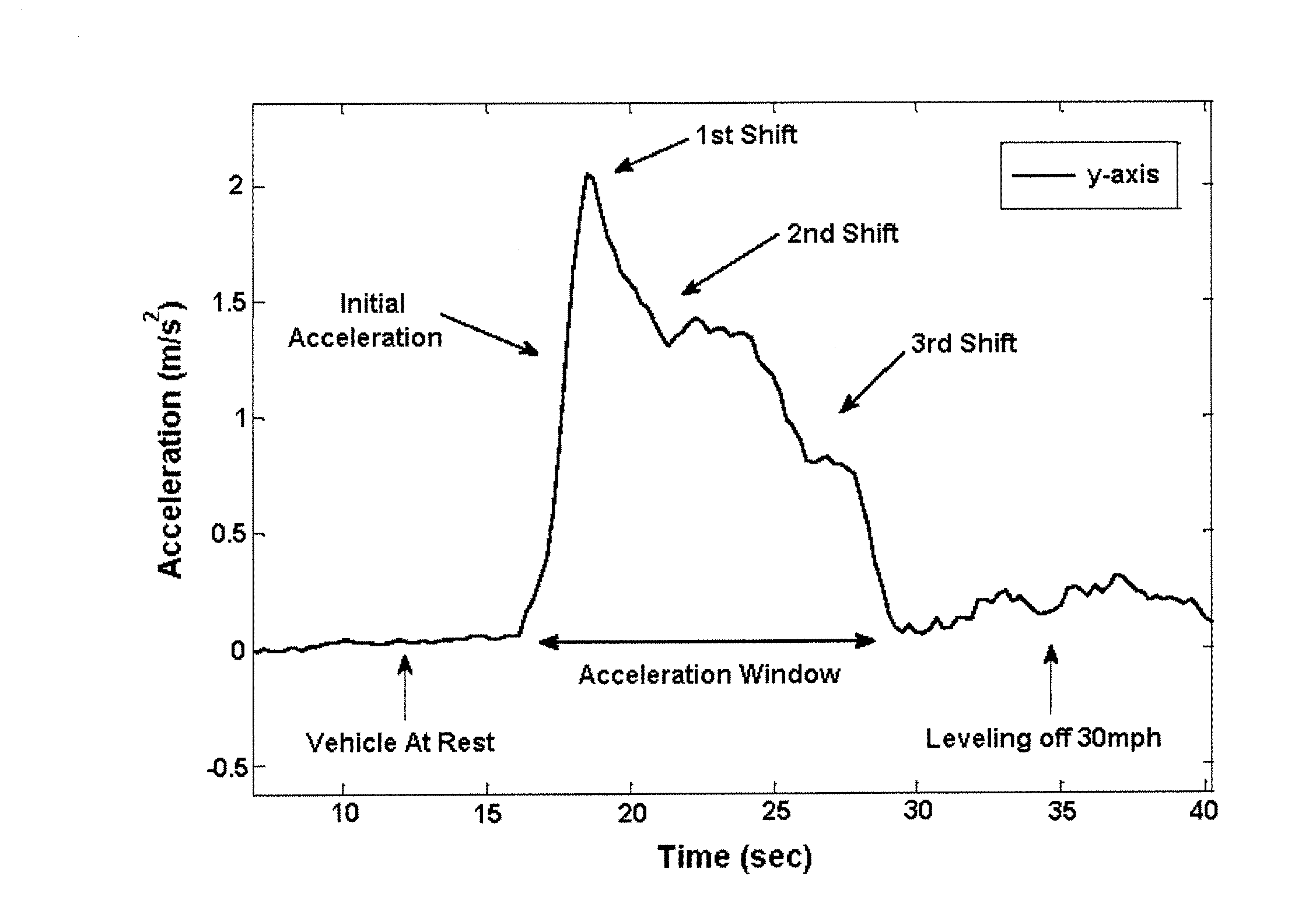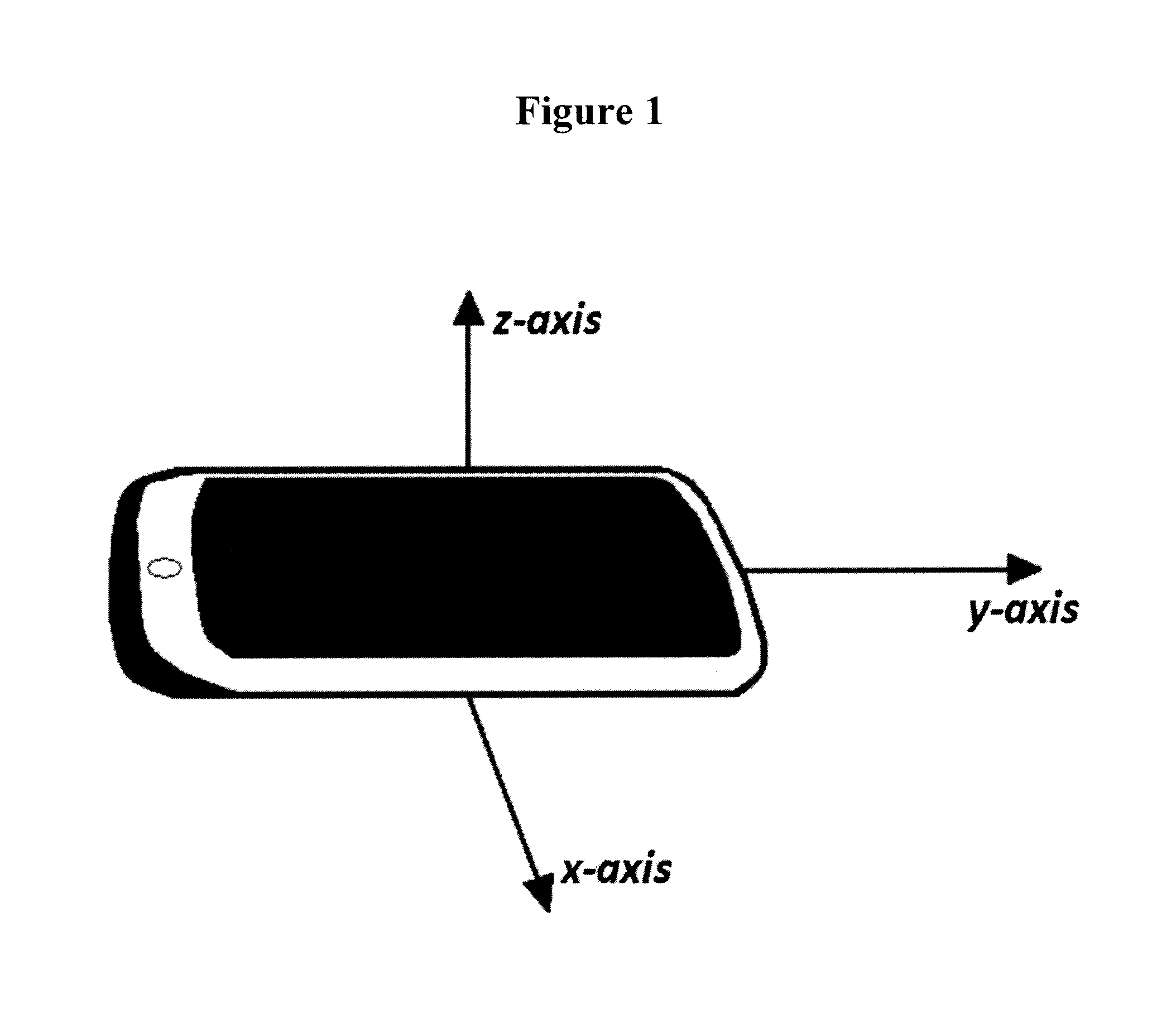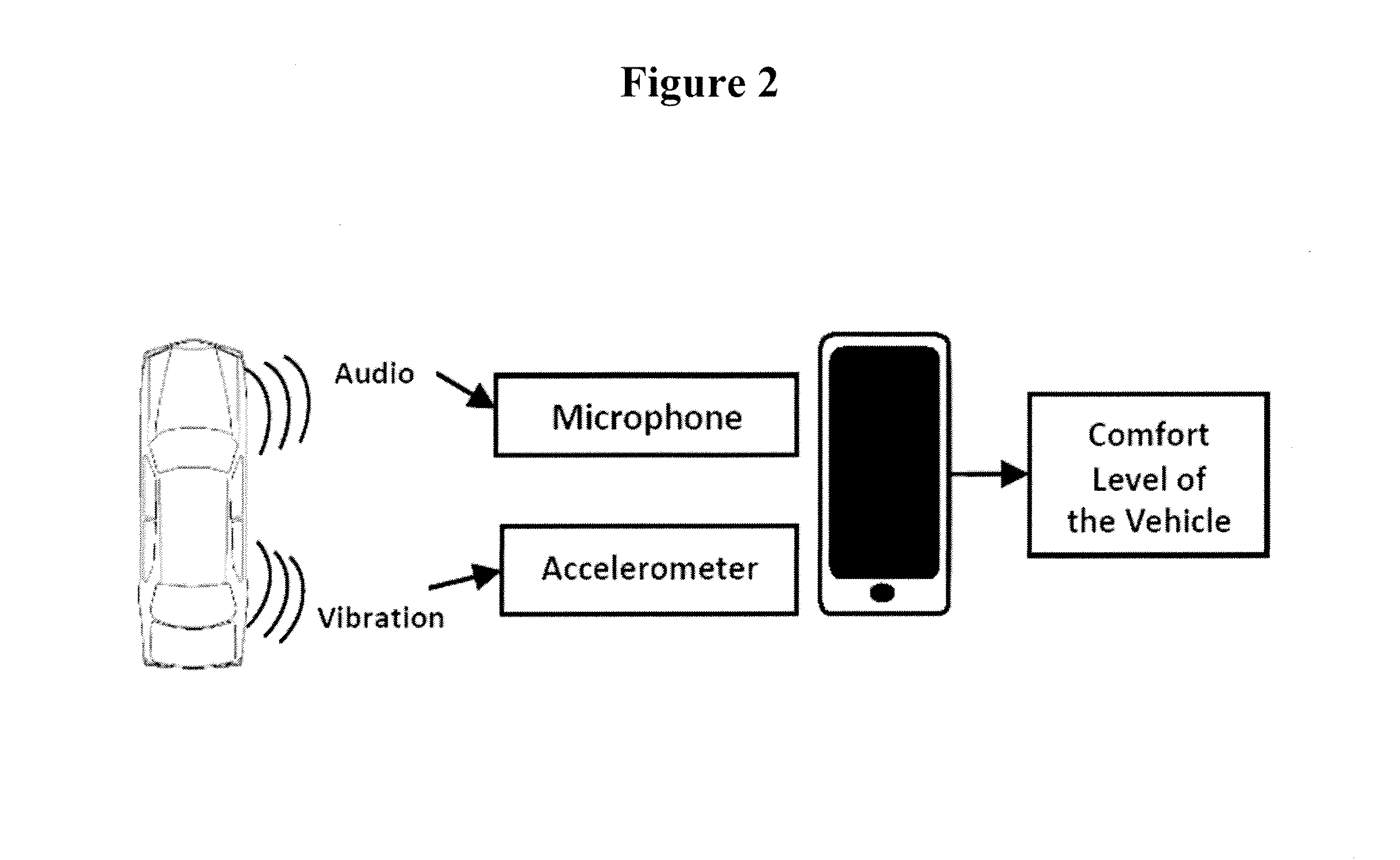Methods for detection of driving conditions and habits
a driving condition and driving habits technology, applied in the field of driving conditions and habits detection, can solve the problems of unsafe performance, difficult to constitute a comfortable ride in a vehicle, hazardous in the eyes of the public, etc., and achieve the effect of maximizing safety, maximizing safety, and operating a vehicle safely and efficiently
- Summary
- Abstract
- Description
- Claims
- Application Information
AI Technical Summary
Benefits of technology
Problems solved by technology
Method used
Image
Examples
example 1
Analyzing Vehicle Comfort
[0036]For a driver to feel completely safe, he or she must have total control over the vehicle being operated. This factors into the idea of how the driver feels and reacts while on the road. It is essential to secure this relationship for a driver to be fully confident in their abilities on the road. Different types of automobiles such trucks or cars perform differently and offer many types of unique features that can be categorized as personal comforts: rear camera support, side airbags, sound dampening technology, and low engine vibration levels. Identifying this comfort level is an initial step to buying a car and should be considered as a safety parameter for drivers. The comfort of a vehicle directly reflects the health of the passenger and the driver.
[0037]In order to assess the comfort of a vehicle while driving, the accelerometer and microphone in the smartphone are used to quantify vehicle vibrations and noise levels. FIG. 2 illustrates a general s...
example 2
Analyzing Vehicle Performance
[0048]Knowing that a car is performing efficiently is a concern for many drivers on the road. Engine problems can arise at any time even while accelerating in high speed traffic. Slipping in and out of gears can happen frequently with older transmissions and can be a potential risk while driving down the highway. Using a mobile smartphone, it is possible to recognize these gear shifts that take place in the engine. Sequentially shifting around 2500 RPM is essential in obtaining an efficient fuel economy for manual transmissions. Recognizing gear slippage in automatic transmissions can be an early warning of low transmission fluid, worn clutch discs or a faulty shift solenoid which are all essential components responsible for transporting you safely to your next destination. FIG. 5 shows a vehicle, in this case Truck 1, starting from rest and accelerating to approximately 30 mph before leveling off. FIG. 5 was converted to velocity by integrating the curv...
example 3
Analyzing Driving Patterns
[0049]Knowing that a driver is driving correctly and safely is beneficial to that driver's life and to the lives of drivers around him or her. The way a vehicle is maneuvered on the road can influence how other drivers react as they habitually follow other drivers' movements to potentially avoid an unforeseen road hazard.
[0050]The x-axis and y-axis data from the accelerometer were used to measure the driver's direct control of the vehicle as they steered, accelerated and applied the brakes. The phone was oriented with the front of the phone facing the rear of the car, rotating it 180 degrees from the previous orientation placement. With the phone in the front passenger seat, driving behaviors of acceleration and deceleration were recorded in safe and extreme conditions shown in FIG. 6.
[0051]A safe acceleration and deceleration are shown in FIG. 6a as a gradual decline and incline in the acceleration measurements respectively. As seen in the graph, safe acce...
PUM
 Login to View More
Login to View More Abstract
Description
Claims
Application Information
 Login to View More
Login to View More - R&D
- Intellectual Property
- Life Sciences
- Materials
- Tech Scout
- Unparalleled Data Quality
- Higher Quality Content
- 60% Fewer Hallucinations
Browse by: Latest US Patents, China's latest patents, Technical Efficacy Thesaurus, Application Domain, Technology Topic, Popular Technical Reports.
© 2025 PatSnap. All rights reserved.Legal|Privacy policy|Modern Slavery Act Transparency Statement|Sitemap|About US| Contact US: help@patsnap.com



